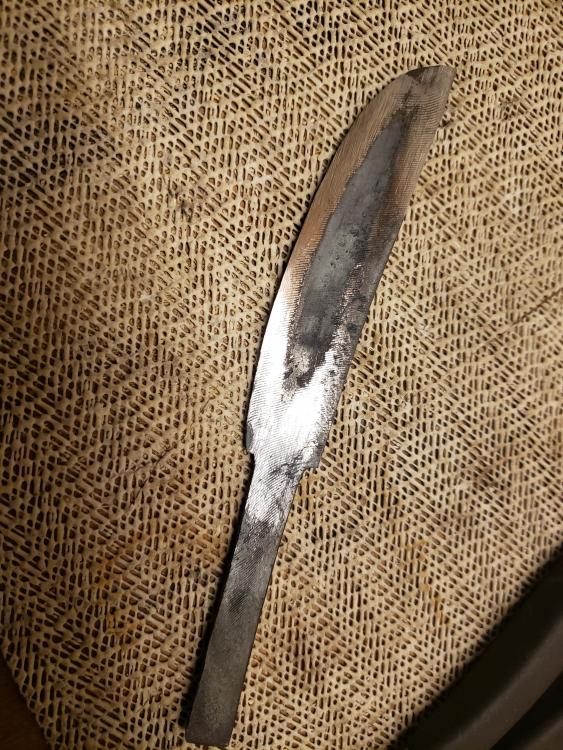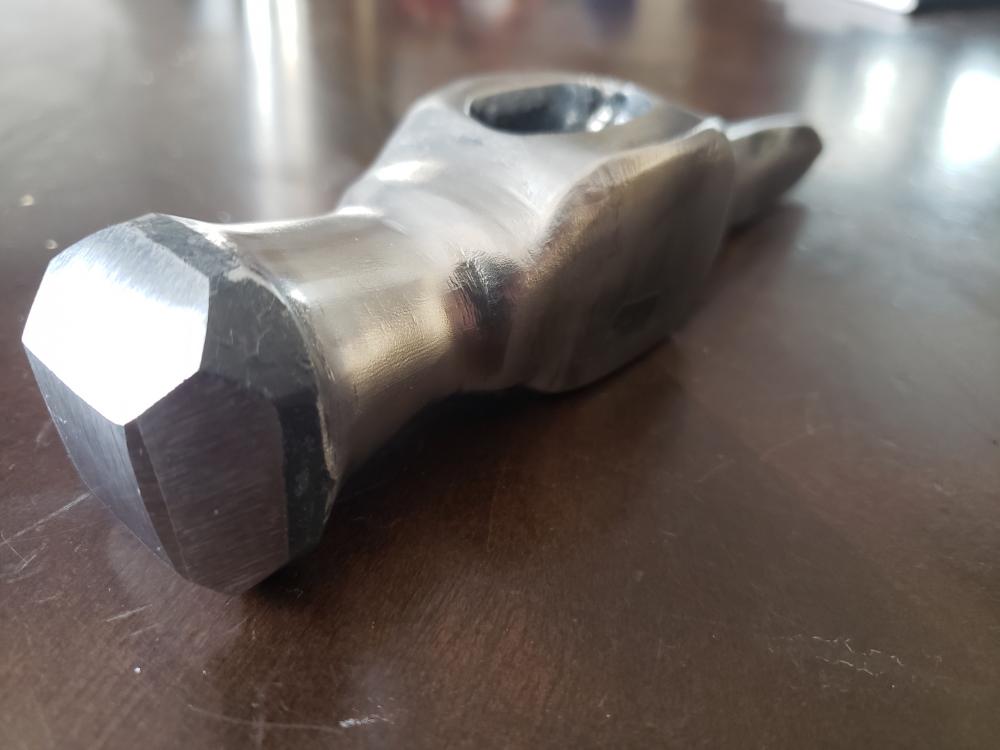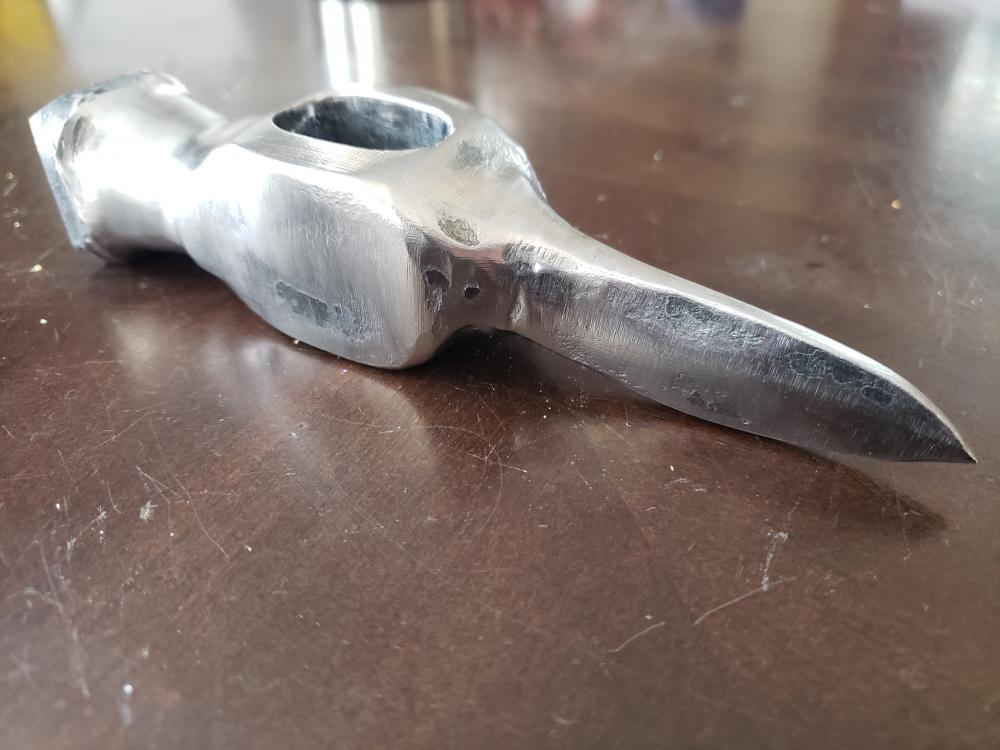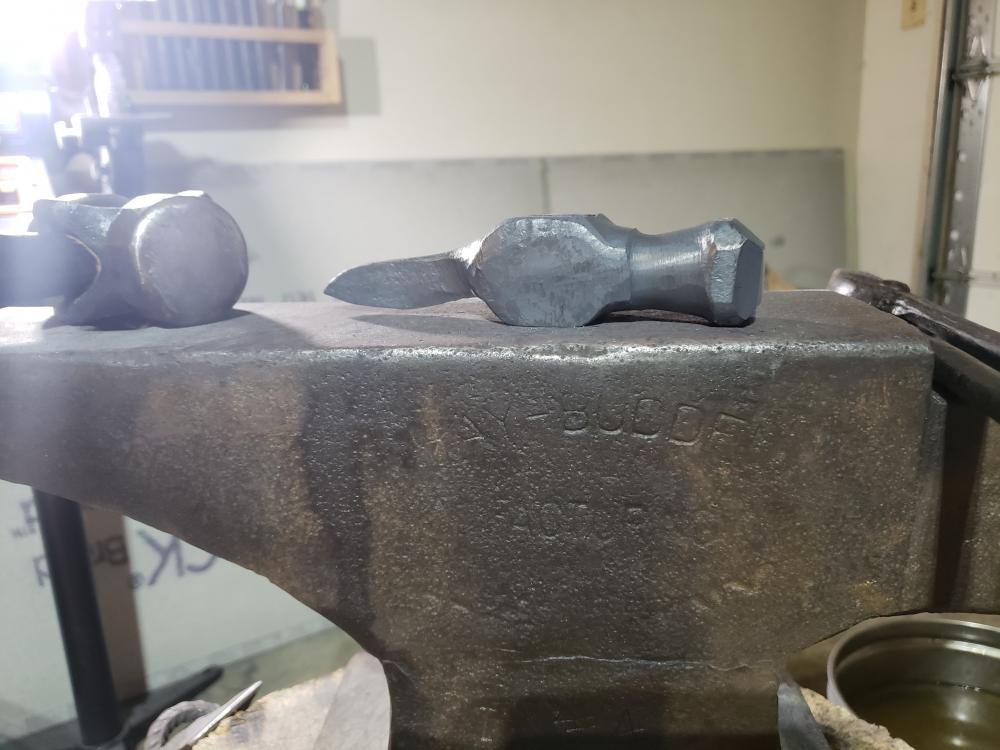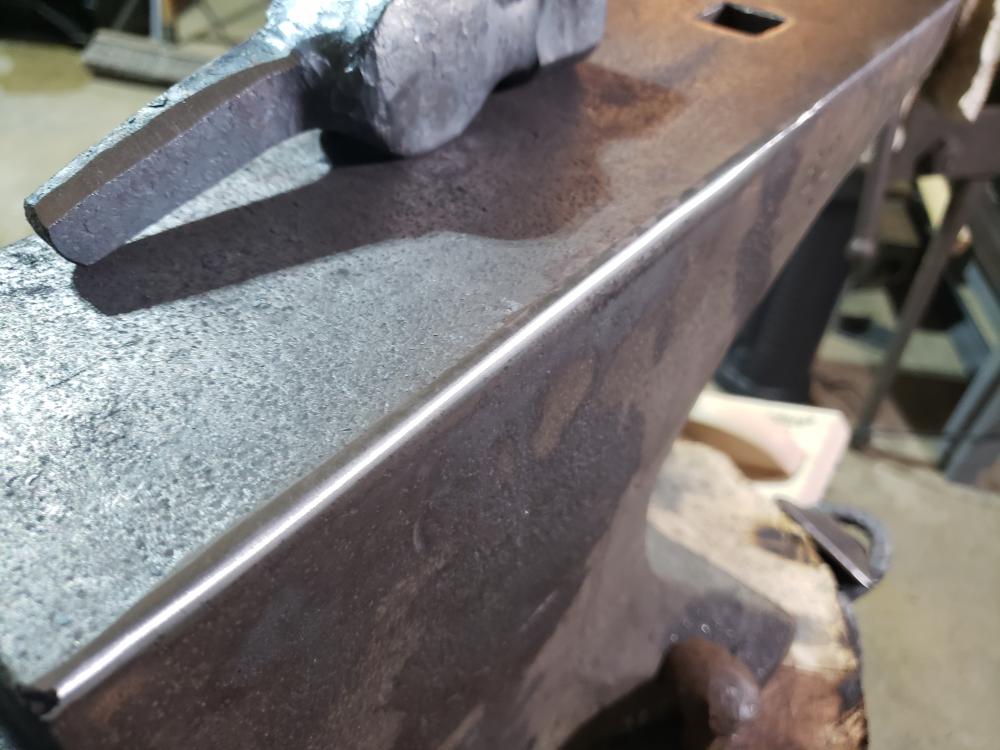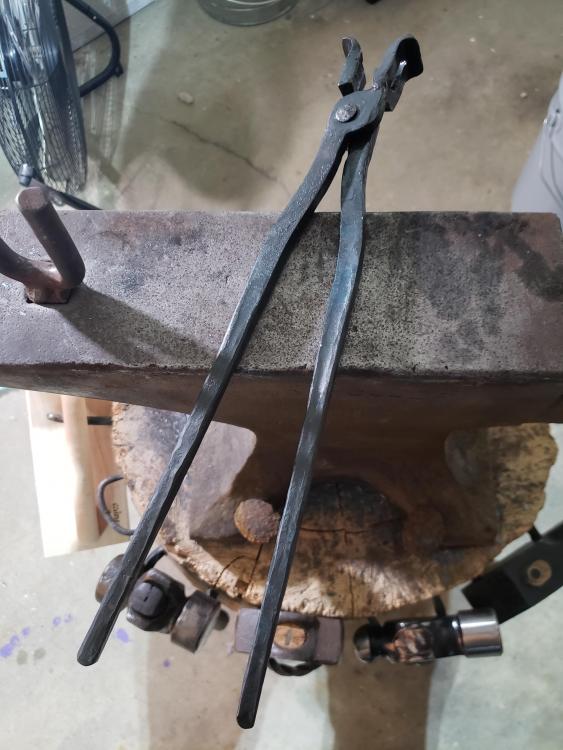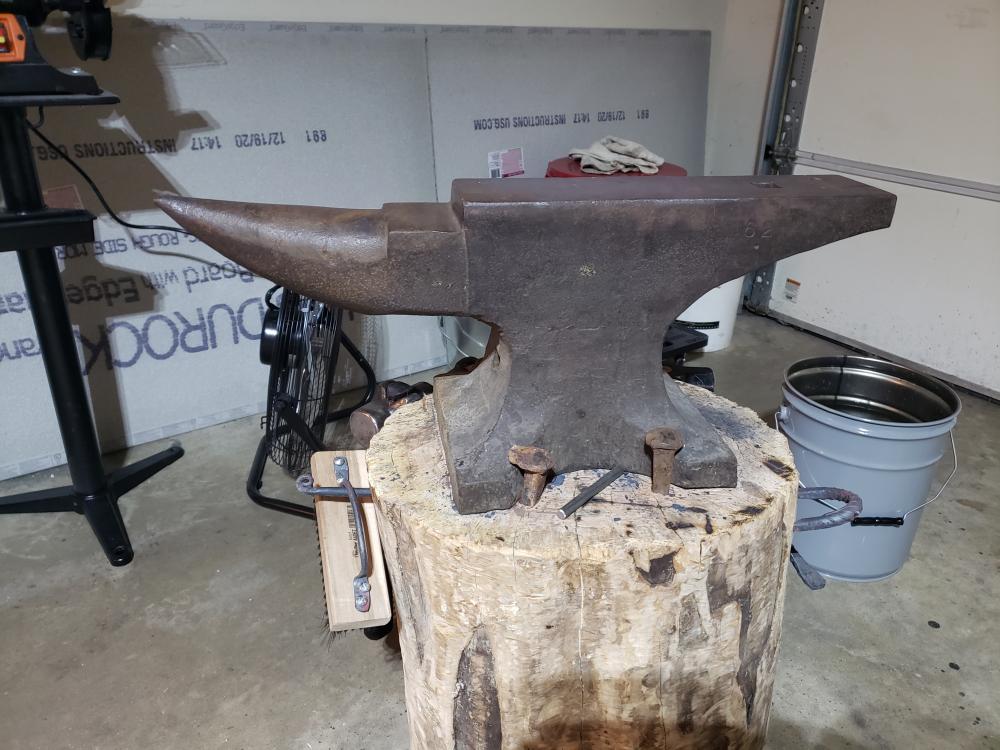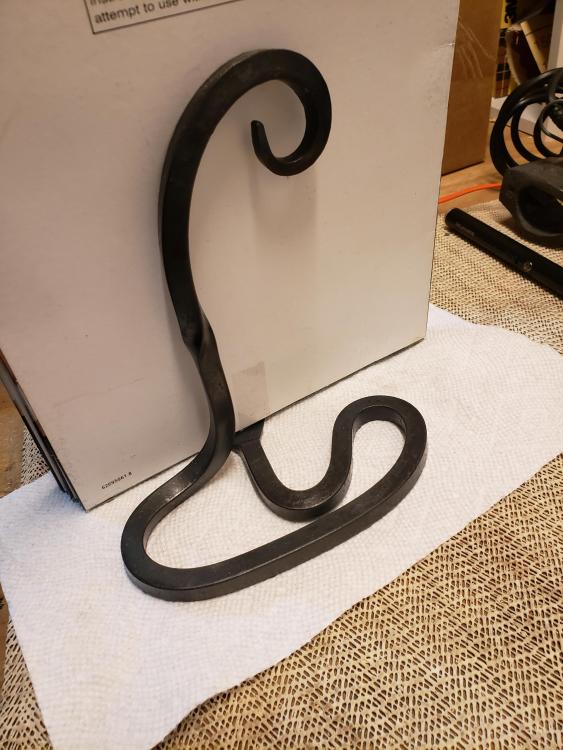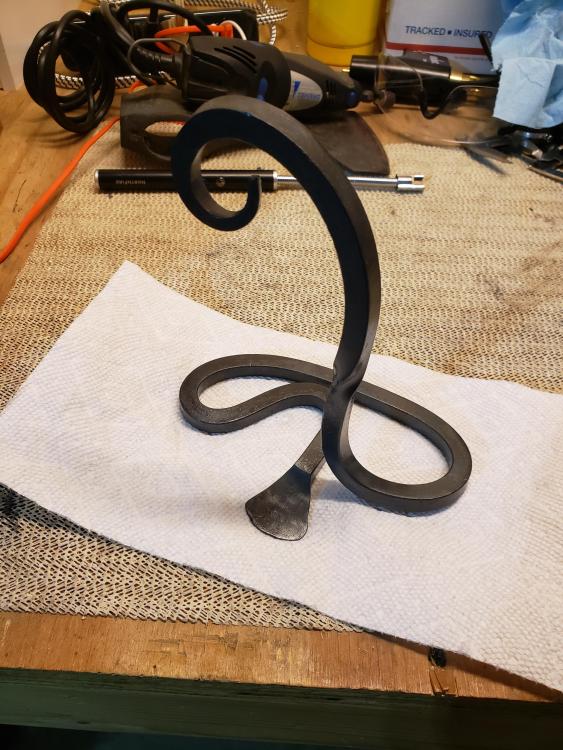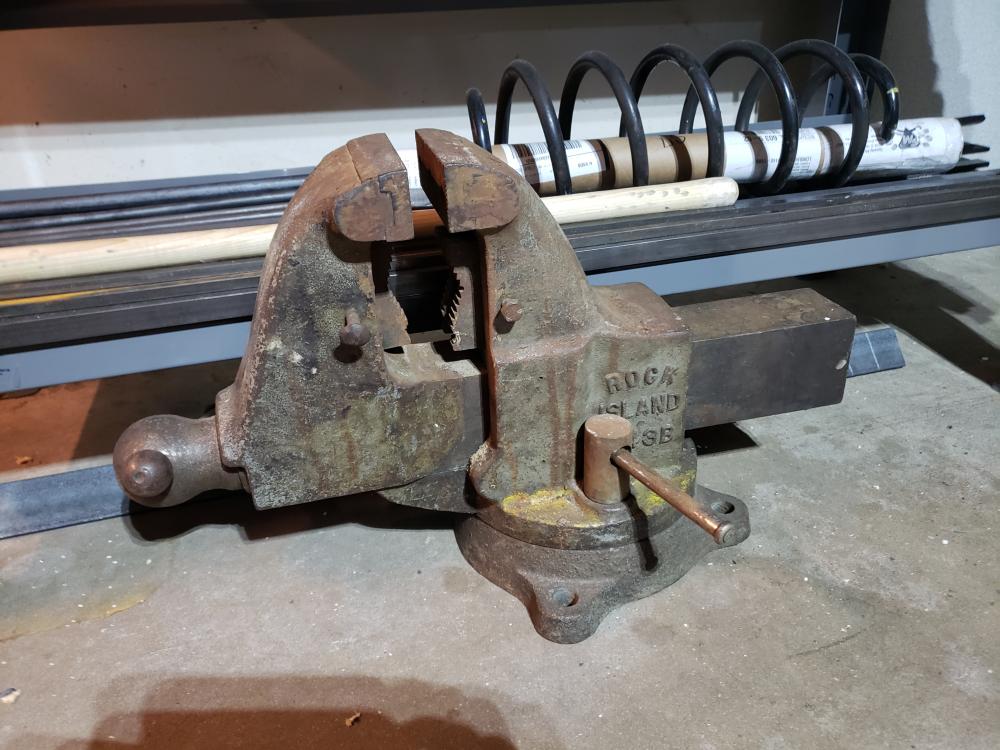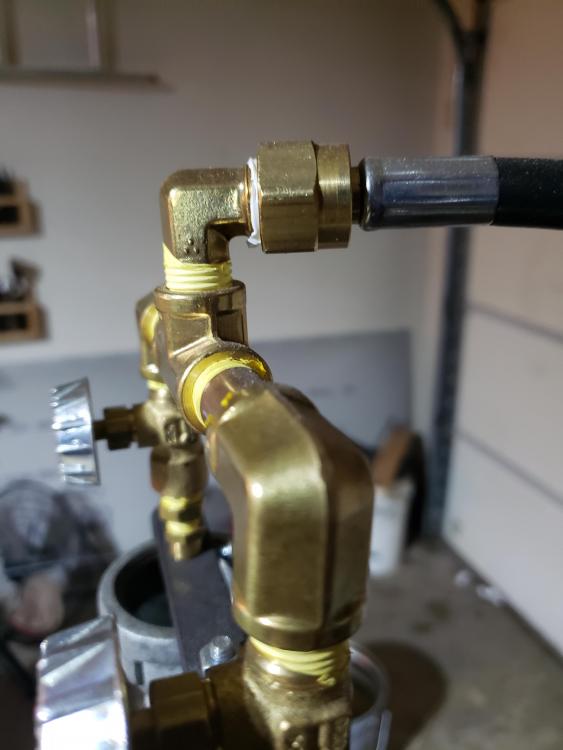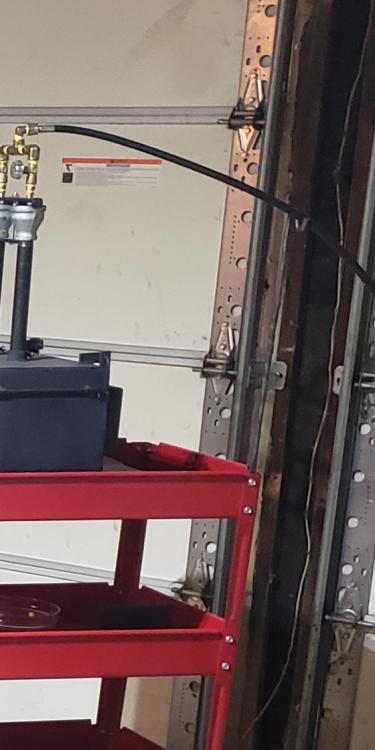-
Posts
114 -
Joined
-
Last visited
Content Type
Profiles
Forums
Articles
Gallery
Downloads
Events
Everything posted by Kexel Werkstatt
-
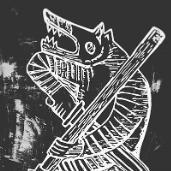
What did you do in the shop today?
Kexel Werkstatt replied to Mark Ling's topic in Blacksmithing, General Discussion
"Tell me no more of Gotham fools, Or of their eels in little pools, Which they were told were drowning; Nor of their carts drawn up on high, When King John's men were standing by, To keep a wood from browning. "Nor of their cheese shoved down the hill, Nor of a cuckoo sitting still, While it they hedged round; Such tales of them have long been told, By prating boobies, young and old, In drunken circles crowned. "The fools are those who thither go To see the cuckoo bush, I trow, The wood, the barn, and pools; For such are seen both here and there, And passed by without a sneer By all but errant fools" Challenge accepted! I operate a small business in the firearms industry. Which is much like trying to drown eels in buckets of water. -

What did you do in the shop today?
Kexel Werkstatt replied to Mark Ling's topic in Blacksmithing, General Discussion
Woot woot! I knew I'd like it here. Let the ignorance flow! Alas, I have not yet done anything in the shop today, though. Therefore, me thinks I am spewing hyperbole in the wrong place. -

What did you do in the shop today?
Kexel Werkstatt replied to Mark Ling's topic in Blacksmithing, General Discussion
Oh no worries I see how my post could sound like I was offended in some way. I don't get offended, I was just saying I'm aware, all in good fun, and I am unfortunatley very familiar with Illinois' firearm and weapon laws. I wish I was blissfully ignorant sometime, but even plausible deniability has its limits. Thanks for posting the info. -
Done. My condolences.
-

What did you do in the shop today?
Kexel Werkstatt replied to Mark Ling's topic in Blacksmithing, General Discussion
I'm aware of our laws guys, more than you know. Thank you though, in case I was ignorant, which I am not. Illinois is insane overall. The gun laws are draconian. I'm in the business, which is why I know too much. -

What did you do in the shop today?
Kexel Werkstatt replied to Mark Ling's topic in Blacksmithing, General Discussion
I can keep it in my truck no problem. I can't carry it into a movie theater. That's the gist of it. -
Old-style step dancing Old-style step dancing is sometimes called "Munster-style sean-nós". Old-style step dancing evolved in the 17th-18th century from the dancing of travelling Irish dance masters. The dance masters slowly formalized and transformed both solo and social dances. Modern masters of old-style step dancing style can trace the lineage of their steps directly back to 18th century dancers. The Irish Dance masters refined and codified indigenous Irish dance traditions. Rules emerged about proper upper body, arm, and foot placement. Also, dancers were instructed to dance a step twice—first with the right foot then with the left. Old-style step dancers dance with arms loosely (but not rigidly) at their sides. They dance in a limited space. There is an emphasis on making percussive sound with the toes. The Irish dance masters of this period also choreographed particular steps to particular tunes in traditional music creating the solo traditional set dances such as the Blackbird, St. Patrick's Day, and the Job of Journey Work, which also persist in modern Irish stepdancing. In this context, "set dance" signifies a separate tradition from the social dance tradition also called set dance. Modern stepdance The most predominant form of Irish Stepdance is that popularised by the Broadway show Riverdance, and other Irish dancing stage shows since the late 20th century. Characterised by a rigid torso and dances performed high on the balls of the feet, this style became distinct from the late 19th century when the Gaelic League began efforts to preserve and promote Irish dance as part of a broader nationalist movement concerned with Irish culture. Although a rigid torso may be the initial characterization of Irish dance, modern soft shoe Irish ballerinas commonly gracefully use their arms in flowing movements, abandoning the traditional form. It is not uncommon for hard shoe dancers to use their arms in strict hand formations other than arms at sides. In 1929, the League formed An Coimisiun Le Rinci Gaelacha (CLRG, The Irish Dancing Commission) in order to codify and standardise stepdancing competition and education. Over the following decades, CLRG expanded globally, and promoted this particular form of stepdance by developing examinations and qualifications for teachers and competition adjudicators. Today, stepdance in the style codified by the Gaelic League is performed competitively in a number of countries, and under the auspices of a number of organisations which have at various times broken away from CLRG. Will-I-am - awesome shop.
-

What did you do in the shop today?
Kexel Werkstatt replied to Mark Ling's topic in Blacksmithing, General Discussion
I'd love to see a picture of it if you have time. This is my first one and will be going on a Hickory shaft. I have not yet decided if I will put guards on it. The Hickory I have for it is 29" long, so realistically it will be about 28" long. I do plan to put one main rivet right through the side of the body. If I do the guards I'll lap them over the top and use multiple rivets. We'll see how it all goes. I have no idea what exact steel it is (it was a Harbor Freight ball peen hammer), so I'll give oil quench a try and file test it, go from there. I'm almost wondering if I might go shorter on the handle, and keep it in the truck as an "emergency convincing tool" for fun. I know I would definitely not want to get hit with this thing. I also started my first Yakut knife today from an old file. -

What did you do in the shop today?
Kexel Werkstatt replied to Mark Ling's topic in Blacksmithing, General Discussion
Patterned from a German War Hammer (or a ~30" handle Horseman's type) and the photo is a little deceiving, it's not quite a blade, although it does have the profile of one. It would go through a helmet no problem, but it would not go through 100 helmets no problem for sure. Luckily, if I ever use this thing, it would probably only be once. -

What did you do in the shop today?
Kexel Werkstatt replied to Mark Ling's topic in Blacksmithing, General Discussion
Phase II of the Kriegshammer #1. Now I just have to harden and temper it... then finish/polish and handle. -

What did you do in the shop today?
Kexel Werkstatt replied to Mark Ling's topic in Blacksmithing, General Discussion
-
It's currently 1 degree here, we hit a whopping 7 today mid-day. Felt like summer.
- 102 replies
-
- introductions
- gas forges
-
(and 1 more)
Tagged with:
-
Well it's grinding weekend for me. I actually love grinding (and rasping and sanding), at least the process of it, but I hate the mess, wearing the respirator for hours, having to blow out or vacuum all the particles and dust, etc. I have a diagonal peen hammer to finish (or at least work on), some hardy tool shanks to fit, and then the anvil face edges as well. Gonna be messy in there tomorrow. I also have to refill my tanks, finish a few bottle openers, redo a rack I built (messed that one up pretty good), and I want to start this ball peen hammer - into a war hammer project I drew up. Pretty ambitious for Valentine's Day weekend. Proactively I purchased a bunch of gifts to "buy" myself some extra freedom of movement! Realistically if I can get half of the above done by Monday morning I'll consider it a success.
-
Yes I searched, did not find anything on this specific question. If I missed it, feel free to bark at me and provide the thread link. I'm quite comfortable with that. I read multiple times, Thomas' comment specifically: "Only grind your anvil face the amount you would grind your own face using the same tool and do your face first!"... I get that and am not talking about taking a grinder to the entire anvil face. Story: I have a ~145 pound Hay-Budden - 1910, Blacksmith's anvil. Great condition. When I first set it up, I was running it hammer-to-horn, and after taking member anvil's advice, I now run it hammer-to-heel. I am getting used to it this way. However, when I ran it hammer-to-horn, there was a very nice radiused edge on the far face near the horn, and it helped draw out very nicely. Now, I realize I can always use the bic but it was very convenient to have that rounded edge on the far side on the anvil. I am left handed, and obviously a right handed person used it before me and so over time the rounded edge probably just "made itself" with use. Now that I've spun it the other way, I have the sharp edge on the far side of the anvil. Again, I know there are other ways around this but that one spot was again very convenient for working on the face (far edge), and not getting the sharp edge marks in the material. I do not want to wait 4,000 hours to naturally create a rounded edge if I don't have to. I have plenty of sharp edges available. So now my question - if I take a few minutes to only grind a little bit on the far side edge to create a bit of a radius, a slightly rounded edge, have I angered not only the Anvil Gods but the Senior Staff here as well? I understand the construction of my anvil by manufacture date so I have plenty of tool steel on the face to work with, I would not get it any hotter than having hot steel on it, and would go slow, take my time, and only take about a 2-3" section on the far side using a high grit flapdisc to create the radius. At most I can see myself grinding off about 1/16" thickness on the angle to create the "starter" rounded edge, and let my banging improve it over time. Thoughts on this? Thanks in advance. Edited to add a couple stock photos of my anvil for reference.
-
I'm still a newbie and was glad I got one from the guy that sold me my anvil. It makes a lot of things easier...
-
Very nice!
-

What did you do in the shop today?
Kexel Werkstatt replied to Mark Ling's topic in Blacksmithing, General Discussion
Thank you. -

What did you do in the shop today?
Kexel Werkstatt replied to Mark Ling's topic in Blacksmithing, General Discussion
-
Traded a guy a bottle of Irish Whiskey for this great condition Rock Island 543B. It weighs 125 pounds. We traded "vises"/"vices". Badump-psh.
-
FF - you can say where you got the braided hose, you just can't put a live link. These guys give good advice.
-
Mine is just the standard rubber style hose, and luckily it came with the 90 degree elbow they are talking about so it was easier to just "prop" or support the hose and direct it the way I wanted. I an envious of your braided hose. I am in the market for one as they are sturdier. Here is a picture of the elbow if that helps.
-
My line is not vertical but this is what I did... hard to see but look at the closest corner of the cart you'll see i just took some stock and made a "hose support/holder" hook thingy and mounted it.

